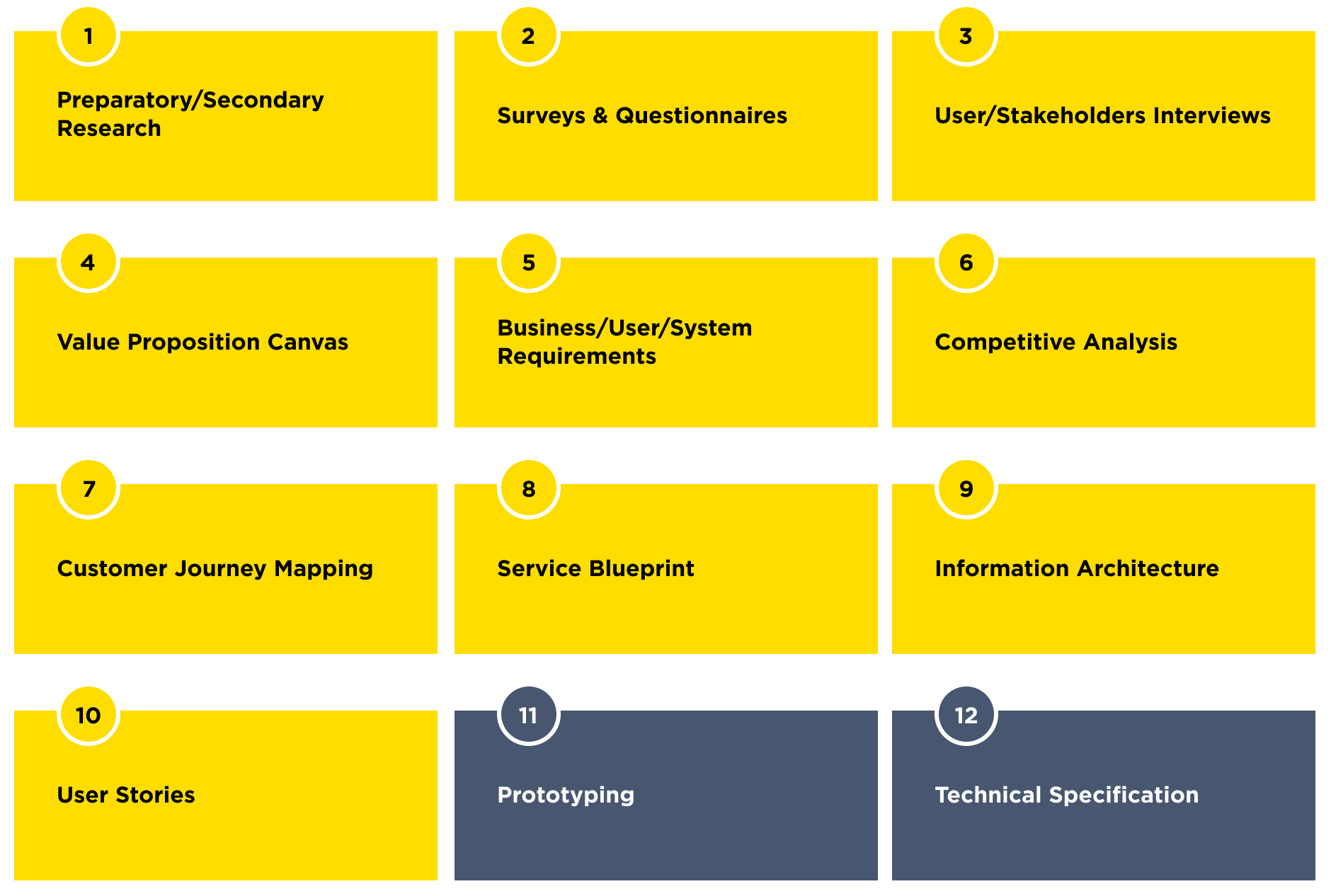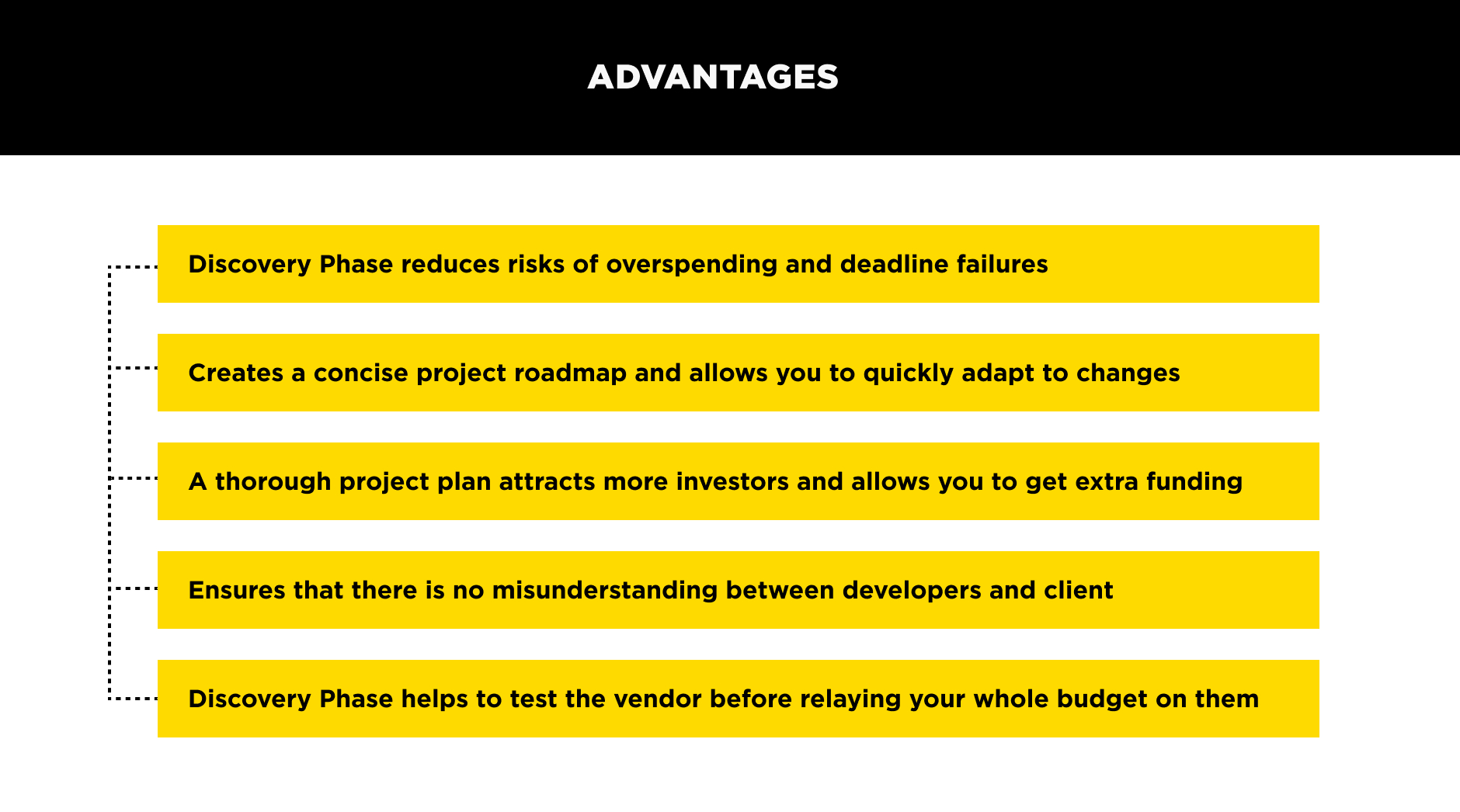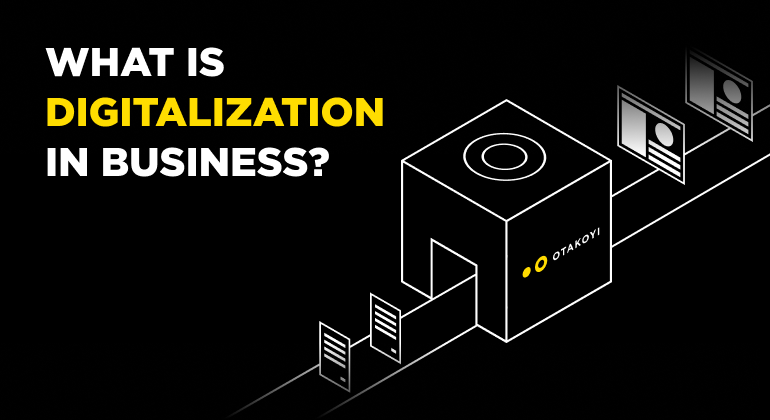What are the prerequisites of successful software product development? They are a mindful consideration and equal elaboration of each of the IT project phases, starting from the initiation and planning phases to execution, monitoring, and closure. If each of these five stages is well-considered, then the chances for success are fairly high.
The fact is that people tend to underestimate the importance of the initial phases of a project, which often leads to scope creep, undesirable overspending, and failure to meet the deadlines. In order to avoid these scenarios, it is recommended to conduct an IT project discovery phase when transitioning from the initiation to planning.
But what is the Discovery Phase and why the majority of IT service providers strictly require it before tackling the project? Let’s see:
What is the Discovery Phase?
Discovery Phase is the first and the most crucial stage in the project development. It is an idea validation process when you dig deeper into the details of the project to get the artifacts necessary for its successful realization. The Discovery phase helps to better understand your idea, define its features, evaluate its scope, budget, and possible risks. It helps us to build the exact product you have on your mind. It helps you to ensure that your expectations will match the reality after the development is over.
The discovery phase duration depends on the scope of the project. Usually, it lasts 2-6 weeks.
When Do You Need the Discovery Phase?
There are few common scenarios:
- You only have an idea, but there is no vision of the target clients/users/competitors and, moreover, you don't yet know anything about the visual and functional part of your future product. Therefore, you need a thorough Research Documentation, Prototype Design, and Technical Specification to start the development process.
- You already have a full product idea: you conducted complete market research, you know your target market and customers, you already have examples of a product you want us to develop. In this case, you only need Technical Specification and a Prototype to start the development.
- You already have a finished project, but it doesn’t work well as intended. It means that you need to conduct thorough research to find the source of the problem and come up with an effective solution.
These cases show that your project critically needs the discovery phase since it is the only effective way to clarify all of the important aspects and develop a successful software product.
How We Run a Discovery Phase
Depending on which of the above cases describes your situation, we will recommend a certain set of the Discovery Phase steps. We use a variety of different tools and methods to facilitate the initial stages of your project and ensure a successful start of the development process. Here are some fundamental approaches that OTAKOYI undertakes when conducting the Discovery Phase:

1. Preparatory/Secondary Research
Preparatory Research implies a comprehensive study of industry-specific scientific publications, social media, etc. to discover information about your industry, competitors, or corresponding experiences.
Secondary research implies using an already compiled and organized research made by others. It is a shorter and cheaper way but lacks an individual approach.
Result: Summary of text snippets or a collection of photos, screenshots, or videos presented as a mood board/mind map
2. Surveys & Questionnaires/Non-Empirical & Empirical Personas
Surveys & Questionnaires help to collect quantitative feedback on a product’s features from your target users. The results are invaluable during the User Experience (UX) development.
Result: A filled out survey form with answers
3. User/Stakeholders Interviews
Interviews allow seeing things from the perspective of your users/stakeholders. Thus, you can build a product that suits both the needs of users and all key personas related to the project.
Result: Text file/table with broader answers to the questions
4. Value Proposition Canvas
Value Proposition Canvas is meant to show whether there is a fit between your product and market — whether the solution complies with the customers’ values and needs. Can be used both when making a new offer or improving the existing one.
Result: Visual Chart
5. Business/User/System Requirements & Constraints Gathering
Business Requirements describe why your company undertakes the project, including its vision, objectives, constraints, etc. User Requirements describe how the users will interact with the system and which actions it allows them to perform. System Requirements serve as building blocks when developers create the system. These requirements describe what the system will do.
Result: System Requirements Document
6. Competitive Analysis
A thorough review of competitors and corresponding solutions on the market. Competitive Analysis is meant to identify gaps in others’ products and services and thus show you new opportunities.
Result: Table/Text Document
7. Customer Journey Mapping (CJM)
Journey Mapping shows customers’ experience when using your product or service, including all their pain points, successes, complex moments, and emotions. CJM provides the UX design team, marketing team, and client with a considerable advantage.
Result: Visual Chart/Table of Customer Journey Map
8. Service Blueprint
Service Blueprint helps to visualize organizational processes and optimize the way your business delivers User Experience.
Result: Visual Diagram
9. Information Architecture
Information Architecture creates a larger picture of how all the small elements fit together and relate to each other within the whole system. A high-level architecture that focuses on organizing, structuring, and labeling content is a must-do step before moving with prototyping.
Result: Visual presentation in Axure or Figma
10. User Stories
User Stories help everyone to better understand what to build, for whom, why, and when. They encourage every team member (even non-technical ones) to think like a user and contribute to the project with new ideas.
Result: Google Spreadsheet
11. Prototyping (Sketching)/Low-Fidelity Prototyping/High-Fidelity Prototyping
A prototype is the final version of the structure of your future website or mobile app.
Result: Clickable Prototype in Axure or Figma showcasing the Use Cases and User Flows
12. Technical Specification
Technical Specification is a document that describes in detail all the technical and non-technical requirements of the project, which will later be taken as a basis by the development team.
Result: PDF Document
These are some of the methods that can be applied during the Discovery Phase. Note that your project does not necessarily need to go through all these steps since it depends on your needs. In this manner, once we identify the needs of your project, we will work together to prepare a customized list of approaches that fit specifically your case.
Benefits of a Discovery Phase

Here are the most notable discovery phase benefits that have a direct impact on the success of any software development project:
It Reduces Risks
The discovery phase promotes the comprehension of the project’s goals and requirements and thus allows the development team to form an accurate picture of timeframes and budget needed for the implementation. Therefore, it drastically reduces the likelihood of overspending and deadline failures, if not totally eliminates it.
Creates a Concise Project Roadmap
Knowing your ultimate destination and requirements of how to reach it allows developers to prepare a detailed plan that depicts each step. After the discovery phase is successfully finished, you will get a full timeline of your project, starting from the product’s ideation to its launch. You know the exact milestones and deadlines. Moreover, a concise project roadmap allows you to quickly adapt to possible changes and make the right turn on the way to your destination.
Attracts More Investors
An agile discovery phase provides you with a thorough project plan and an interactive prototype that you can also use to attract more investors to get extra funding. Investors are more likely to support the startup that already has something to offer instead of just bold ideas.
Ensures Everyone is on the Same Page
As the project discovery phase will progress, you will be able to see whether the vendor correctly understood your business goals and the peculiarities of your project. In case there are any misunderstandings, this phase is the right time to make it all clear not to be disappointed when the final result did not match your expectations or when you make a Change Request and see how much it will cost.
Helps to Test the Vendor
If you have started working with a new software development company and you are still not too sure about them, then conducting a discovery phase is a good way to test them before relaying your whole budget on them. During this time you can see how well they establish communication, keep up to the deadlines, and whether their services are worth all the spent costs. In turn, if everything went just fine, it will help to build trust between you and the vendor and thus make your collaboration more efficient.
Final Words: Why Does Discovery Phase Matter
Discovery Phase is a mandatory requirement of many software development companies for a reason. It helps to create a thorough plan of a project to clearly define its scope, budget, and time needed for the implementation. It allows to substantially reduce the possibilities of any arising development issues and maximizes the chances that the final product will both match the client’s expectations and meet the end-user’s needs. Generally speaking, a completed discovery phase in a project significantly facilitates the success factor.
If you want to know more about the discovery phase and how it can help you with your next endeavor, feel free to contact us.






